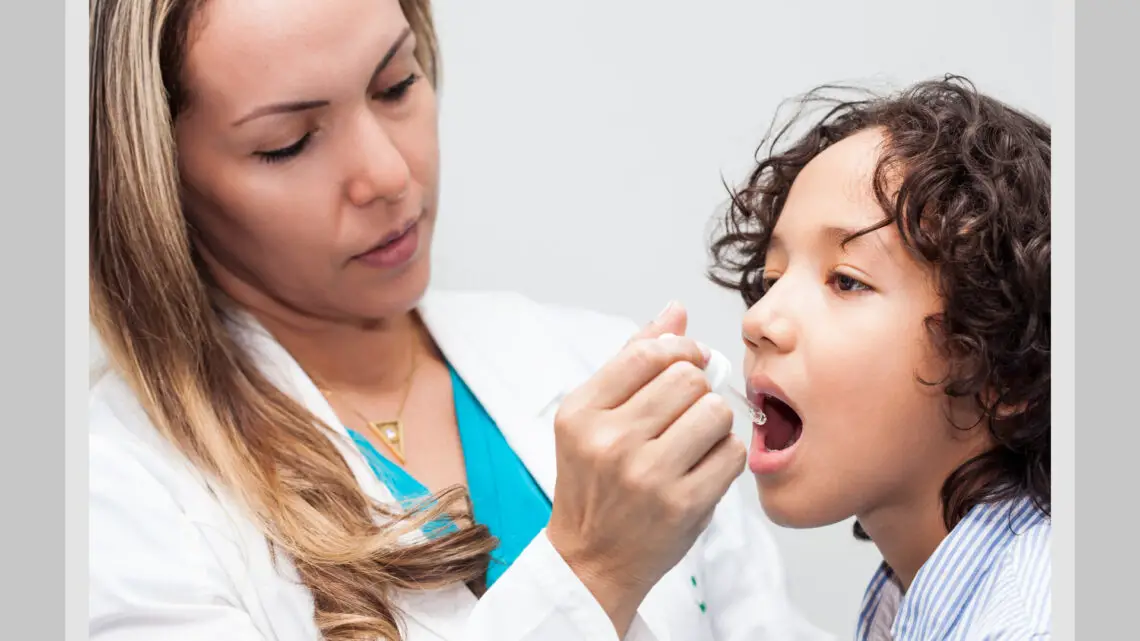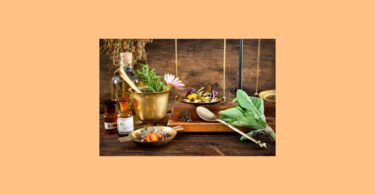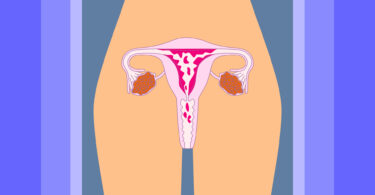[A paper read to the International Homoeopathic Congress, London, 1950.]
The selection of a homoeopathic remedy in childhood is made in the same way as in adults. The difference lies mainly in case taking and in interpreting the symptoms against the normal pattern of behaviour at any particular age. The history is supplied to greater or less extent by the mother or nurse, at any rate by someone other than the patient himself. In formulating a plan of case taking it is therefore necessary to concentrate on symptoms which can readily be observed by someone other than the patient. The mother is usually by far the best person to give the history especially when the patient is an infant. Not only is the mother a keen observer of her infant, but she can often give us an account of the family history, and a first- hand account of the period of gestation and labour.
INTRA-UTERINE ENVIRONMENTAL FACTORS
The recent discovery that German measles in the mother can produce deformity in the foetus has focused attention to this important and easily forgotten part of the child’s life. [1] Over six hundred cases of deformity associated with German measles have now been published. Microcephaly, congenital heart disease, cataract, and deafness are the most common abnormalities.
The period of most danger to the foetus is in the early months of gestation. When the mother became infected during the first two months of pregnancy the chances of foetal deformity were 100 per cent. In the third month the figure dropped to 50 per cent. Viruses can readily pass through the placenta.
In the influenza epidemic of 1918 a high proportion of infected mothers aborted. It is well known that syphilis and occasionally other infections may be transmitted to the foetus causing injury or death.
The use of lead as an abortifacient can cause foetal abnormalities especially congenital heart disease and skeletal defects. The therapeutic use of X-rays and radium can cause foetal defects, especially microcephaly. Dennis Browne has demonstrated how intrauterine pressure can cause talipes and other deformities.
If there were any doubt that the foetus can be adversely affected by its environment in utero, there are instances recorded of deformity of one of similar twins. [2].
Dr. Landtman of University College Hospital sums up as follows:
“Various observations have shown that environmental principles play an important part in the aetiology of congenital malformations. Foetal abnormalities result, but not of any characteristic type, in relation to the various causes. The most important factor appears to be the stage at which foetal development is disturbed. Due to lack of teratogenetic characteristics, malformations caused by environmental agents may simulate abnormalities of genetic origin”.
Drugs taken by the mother can undoubtedly affect the foetus in some cases. Practically all textbooks on obstetrics condemn the use of alcohol during and immediately after pregnancy, suggesting it as a possible cause of sterility, abortions, still-births and a high foetal mortality.[3].
There is experimental evidence that alcohol tends to concentrate in the reproductive organs, and it is freely diffusible through the placenta.[4] Carpenter has shown that in hens with immature eggs that were exposed to the fumes of alcohol for periods of two to twenty nine hours, the concentration of alcohol in the egg was often equal to or greater than the concentration in the blood stream.
The evidence about smoking during pregnancy is contradictory. There is, however, some evidence strongly suggestive that smoking may affect the foetus. The effect of nicotine in breast milk will be referred to later.
The placenta is also permeable to chloroform, ether, morphia, hyoscine, atropine, physostigmine, pilocarpine, arsphenamine, the barbiturates, sulphonamides; penicillin and various salts of sodium, potassium, copper and bismuth. Marked emotional disturbance may affect the unborn child, and no homoeopathic history is complete without a record of any such episodes.
THE EFFECTS OF LABOUR
In the process of birth the infant is exposed to trauma of varying degree, to anoxia, and sometimes to anaesthetics. These observations have been made as a reminder of environmental influences before or during birth, rather than to stress unduly the risks encountered by the foetus during gestation and labour. Occasionally some outstanding event of pregnancy or labour is of the utmost value in prescribing.
It is obvious that we should consider specially the events of pregnancy and labour in children who have never thrived. Faulty milk teeth also suggests an enquiry into pregnancy, as these teeth are formed in the second half of gestation. It is, of course, impossible to rule out hereditary influences in this connection.
THE HOME ENVIRONMENT IN RELATION TO SYMPTOMS.
Even in infancy children are acutely aware of, and absorb the mental atmosphere of the home or the people around them. [5] The nervous child has almost inevitably been brought up in an atmosphere of fear and worry. The effects of a “broken home” where father and mother have separated, or are mentally incompatible, are highly damaging. It has been noticed in child guidance clinics that the “broken home” is a frequent cause of juvenile delinquency. One of the basic needs of childhood is a sense of emotional security. In the “broken home” he does not feel secure. When a young child, under the age of five years, is removed from his mother for a period of six months or longer there is statistical evidence to show that this child has a greater tendency to develop into a juvenile delinquent than average. [6].
Almost equally damaging to the child is a feeling of insecurity engendered by ambitious parents who make the child feel he is valued for his achievements rather than for himself. If it is forgotten that children tend to react in a similar way to their mental environment, mental symptoms may be evaluated too highly, as being characteristic of the individual. Also in such cases the environment may be too strong for the child to overcome even if the correct homoeopathic treatment is given.
FEEDING IN RELATION TO SYMPTOMS
In this country infant feeding is now well supervised. Mistakes still occur, however, and in infancy the amount and nature of the feeds should be ascertained. The technique of feeding must also be considered carefully. If this is overlooked symptoms arising from mismanagement may easily be mistaken for constitutional ones. We have to remember the possibility of contamination of food, and this applies to breast milk also. Many drugs are excreted in the milk but advances effects on the infant are few. Nicotine is excreted in the milk of mothers who smoke during lactation. Moderate smoking (up to seven cigarettes per day) appears to have no ill effects on the breast-fed infant. The amount of nicotine excreted in the milk in mothers who smoke over fifteen cigarettes per day is considered potentially harmful to the infant.[7] Dr. W. H. Thompson writing in the American Journal of Obstetrics and Gynaecology states “When one considers the statements of Cushney that nicotine is about as poisonous as prussic acid, it seems logical to consider that even minute quantities of nicotine administered through breast milk might upset digestive processes to the extent of endangering the early growth of delicate babies. [8].
The preparation of food in aluminium pans may cause harm. Copper cooking utensils are much less widely used. They can cause symptoms if not kept clean. [9]. Many babies of mothers who smoke or use drugs, and many children fed on food cooked in aluminum seem perfectly well. It seems to be largely a matter of sensitivity whether the individual suffers or not, particularly when only small amounts of toxins are ingested.
POST-NATAL HISTORY
The mother can usually supply us with an accurate list of acute illness, reaction to immunization, trauma, mental or physical, and any drugs given to the child in chronological order. The mother usually gives some valuable clues to the nature of the child, in addition to that which we can observe for ourselves. It is useful, however, to have some plan of interrogation in mind, based on the symptoms of high value which the mother is in a position to observe.
GENERATIONS WITH SPECIAL REFERENCE TO CHILDHOOD
From earliest infancy there are signs of individuality. The infant spends most of its time in feeding and sleeping. Observation in any children’s ward will show that during sleep many children tend to take up characteristic positions. A large proportion of children do so during the first year. In many children the tendency disappears or may alter later. In some it persists. Kent’s Repertory lists only one remedy for the knee elbow position. “Sleep position, on the knees with face forced into the pillow”, Medorrhinum. Enquiry of the position adopted in sleep suggests that Lycopodium or Sepia, Tuberculinum, Calcarea phos. and probably other remedies also have this symptom. The value of it is that the mother can usually give a definite answer to the question and it is obviously a generality.
Occasionally, the infants response to being picked up and especially to being laid down may be useful. Aversion to downward motion, as when the baby is laid down in its cot may confirm the selection of Borax for example.
Enquiry into sleep and dreams may be of value. The older child can relate his dreams. Night terrors are often caused through mechanical blockage of the air passage by enlarged tonsils and adenoids. In these circumstances night terrors are obviously not of high value in prescribing.
As regards food, very young infants may show marked preference for warm foods. They will staunchly refuse a bottle which has been chilled. Others do not mind, and a few have a distinct preference for cold feeds.
At the stage of weaning, it is customary for the infant to reject its first mouthful of a new food, for example, yolk of egg, and if the mother does not persist this might be mistaken for an aversion. In any case it is probable that we are on less firm ground with aversions than with cravings. Children are easily put off by example or suggestion or possibly by being compelled to eat any article of diet while not hungry. Forcing children to eat not only causes mental tension at the dining table, but may change indifference into a positive dislike of any particular food. It is very rare for the mother’s milk to upset a child. The most common fault is that it may be insufficient. This can readily be ascertained by test weighing. In questioning the mother about cravings or aversions to food, it is useful to keep in mind the following list of “animal, vegetable, mineral” :
Animal – cow, meat, fat, milk, butter, cheese, ice-cream.
Pig – bacon, bacon fat, bacon rind.
Fish
Eggs
Vegetables – Potatoes
Other vegetables
Fruit
Bread
Sweets
Mineral – Salt, pepper, vinegar.
Naturally, a desire for ice-cream or sweets is not accepted unless it is very strong in childhood. Aversion to sweets is a peculiar symptom.
It is surprising how many children have a craving for bacon fat or rind. (Calcarea phos., Tuberculinum) Some children love eating bacon rind raw.
Craving for salt or vinegar are not uncommon in childhood. The mother may have to keep the salt cellar or vinegar bottle out of reach.
Brian G., a boy of two months, was sent by a welfare clinic to the out-patients department. His mother said he took his feeds well, but vomited if he took very much. He cried all day, but slept well at night. He was put on artificial food at the age of one week. Three attempts had been made at the welfare centre to get him on the right diet, without success. He was now on a well balanced diet of fresh cow’s milk, sugar and water. The baby looked ill, his skin was dry, his forehead wrinkled, and the anterior fontanelle slightly depressed. Nothing else was noted on clinical examination. The mantoux was negative, urine negative. He was very much under weight. His birth weight was 8 lb. 10 oz. Instead of gaining two or three pounds he had only gained 2 oz. and was now 8 lb. 12 oz.
On enquiry from the mother and father the following facts were elicited. He was most miserable between 4 and 9 p.m. He refused feeds if they were the least bit cool. He invariably slept in the knee elbow position. He was given Medorrhinum and later Lycopodium. He gained I lb. in the first sixteen days after commencing treatment. His mother was advised to gradually increase the feeds. By the end of two months he was “very happy” and his mother noted that he now lay on his side for the first time. He was followed up for five months. He was then seven months old, weighed 16 lb., and was cutting his first teeth. This case is given to illustrate the symptoms of high value which can be observed by the parents.
The mental make-up of a child may express itself quite clearly from infancy. Some babies are irritable, others placid and so on. Sensitivity to noise is so common in young babies, that unless the baby “nearly jumps out of its skin” at slight noises, it may safely be disregarded as an individual characteristic.
In asking the mother about her child’s disposition a number of symptoms can be associated with the words “affection” and “sympathy”. It is normal for babies and children to require affection, but it is strongly marked in some, and in others a desire for affection may show itself only in association with an acute illness. Some babies from the earliest days dislike to be picked up. Some children have a tendency to become indifferent to their parents which is a valuable symptom when there is no apparent reason for it, suggesting Sepia or Phosphorus, etc. The mother can almost always speak quite definitely on this subject. Is the child sympathetic to others; concerned with the troubles of others outside the family circle, or to cruelty? Occasionally there is a cruel streak in the child.
It is something difficult to decide whether a childish fear is inherent or implanted by suggestion. If you protect a young child from the affectionate onslaught of a puppy, fear may be created in the child’s mind. In a nervous child with nervous parents, fear of dogs would not have the same significance as it would in a mentally stable child. When in doubt it is as well to discard a fear which may have been created by suggestion and look for other symptoms of high value such as a craving for salt or other general symptoms. When discussing fears it is, of course, advisable to speak to the mother in the absence of the child. It is as well to keep in mind that very young children often understand much more than we are apt to think. A normal child in its second year understands a considerable amount of what is said in simple language.
The fondness for dancing which is a characteristic of Sepia is sometimes manifest in childhood. But it is the rule rather than the exception for young children to “dance” to the wireless. A boy of 12 suffering from second stage nephritis had been attending the out-patients department for some years with only slight improvement. Symptoms such as “indifference to loved ones” suggested Sepia. When the mother was asked about dancing she said, “Oh, he is crazy about dancing.” At this age it is an unusual symptom. He was given Sepia 200 which was followed by a marked improvement in his general health and appearance.
Jealousy is not uncommon in childhood. Most often the first child is jealous of a new arrival. The normal child is untidy, but an extreme tendency in this respect often confirmed by the child’s appearance strongly suggests Sulphur, especially if the child just cannot be kept clean. On the other hand the fastidious child will put his toys away neatly in rows without being asked. On enquiring of a mother if her little girl of four was unduly tidy, she replied, “Tidy, yes. She even keeps me tidy too.” Needless to say, Arsenicum alb. and Nux vomica are to be considered when this symptom is present. “Desire for Travel” must be marked before it can be accepted as an individual characteristic in childhood.
We must consider the childs reaction to its physical environment–heat, cold, wet weather, thundery weather, stuffy rooms, sea air, etc., as in the case of adults.
The combination of amelioration at the seaside, and adoption of the knee-elbow position in sleep (Medorrhinum) is not infrequently met with in asthmatic children. In assessing our results in asthma it is important to keep in mind that four out of five asthmatic children recover as they grow older without any treatment. Time modalities can be observed in the youngest infant. It should not be forgotten that many young children become tired and “grizzly” towards bedtime.
Finally, the mother can observe any skin symptoms, such as perspiration, its odour and if localized its distribution, on the head or feet for example. Skin eruptions, of any sort, are easily noted by the mother.
THE PRESCRIPTION
The most accurate method of remedy selection is by comparison of the individual symptoms of the patient with drug provings. In cases where the illness began during gestation, there is often some striking episode which is vividly remembered by the mother, most commonly a fright or an acute virus infection. In such cases we can sometimes distinguish between Aconite, Ignatia, Opium, Nat. mur., or other suggested drugs. In the case of an acute infection the symptoms may not be sufficiently clear and an unproved nosode is justified.
Alan W., age 11. R/3566.
Complaint – “Defective speech”.
History : Mother had influenza badly when three months pregnant. Labour normal. It was noted at birth that the feet were deformed. At the age of three weeks the baby was “severely handled” by an orthopaedic surgeon. Was late in walking and can only say “no” and “right”.
Family History : Nil. One normal sister age 7. No miscarriages.
Diagnosis : Cerebral diplegia of pre-natal origin. Upper motor neurone weakness of right inferior extremity.
Treatment- Causticum and Sulphur were given with some benefit. In October,
1949, one dose of Influenzinum 200 was given. A month later there was a definite improvement in appearance.
In March, 1950, he was again brought to the out-patient department. His mother stated “Alan is still making steady progress, the most important being his great interest in figures and writing. We feel sure that with proper training he will soon be able to read and write properly. He can now get about on buses by himself. Speech has not improved much.” “The neuro- psychiatrist who had examined Alan when eight years of age re-examined him two months ago. He revised his own previous decision that the boy was uneducable. The County Council have agreed to pay for this boys education at Camphill, Aberdeenshire”.
In childhood, ill health may date from an acute infection such as pneumonia, from vaccination or immunization against diphtheria. There seems to be more cases of ill health after immunization than after vaccination at present. In addition to the accurate selection of a drug from the totality of symptoms we may use the appropriate nosode, such as Pneumococcin, Morbillinum, Parotidinum or Diphtherinum, when the apparently indicated remedy fails. Sometimes the effect is magical, at other times little or no effect is obtained. The reason for this is not clear. When Dr. Tyler began using these nosodes extensively she did so mainly on patients who had received the benefit of her own expert prescribing, and the results were often dramatic. It may be that these nosodes have a very limited sphere of action, or it may be that the nosode and patient are in different electro-physical groups. Whatever the reason for failure, in some cases these nosodes are too valuable to discard on any theoretical grounds. The nosodes of acute infections are specially valuable when there is a history of severe or prolonged acute illness, and when this occurred in the first or second year of life.
A boy of 8 suffered from enuresis all his life. He had been helped greatly by Lycopodium 200 and later, Lycopodium 10m, but was not quite cured after treatment for ten months. At the age of two he had had diphtheria very badly, being ill for eight months. Diphtherinum 200 was given in January, 1949. He was discharged from the out-patients department as cured in August, 1949.
Drugs cause effects in sensitive patients in incredibly small doses, as we are all aware. Anyone is liable to be affected by sufficiently large doses or when administration is prolonged. Apart from the absorption of drugs during gestation or labour, or from the mother’s milk, the child may be subjected to drugging by mouth, or parenterally, or by absorption of medicaments applied to the skin.
The prolonged treatment of infantile eczema permits of poisoning in this way. To what extent is “suppression” the effects of drug absorption? If a harmless substance such as Calendula is used in ointments or lotions, there is general agreement that there are no bad after-effects.
In cases where drug sensitivity or poisoning is suspected the same drug in potency may antidote the effects of its crude counterpart. Not only is there clinical evidence of this but experiments on fruit flies have demonstrated that Arsenic in potency can antidote the after-effects of arsenical poisoning. [10].
Through the works of Bach, Wheeler and Paterson, a new approach to remedy selection has opened up. There is a mass of experimental evidence to show that the intestinal flora is related to the health of an individual and that the bowel flora can be altered by potentized drugs. From stool analysis of non- lactose fermenting organisms, guidance in selection of the remedy may be obtained. From a study of the symptomatology associated with specific states of the intestinal flora, drug pictures have been evolved. The bowel nosodes are specially valuable in childhood. Morgan co., and Morgan pure (Paterson) are the “skin nosodes” and are often required in infantile eczema. Dysentery co., has a specific action on the pylorus, and has a clinical record in pyloro-spasm and in congenital pyloric stenosis.
The association of remedies with pathological states is helpful in prescribing in childhood as in other fields of medicine. The use of Arnica for the infant (and the mother) after difficult labour, Alumina for constipation in breast fed infants and Chamomilla in painful dentition are well known examples.
For over forty years Lathyrus sativa has been widely used as an effective prophylactic in infantile paralysis. Dr. Taylor Smith has confirmed its value in a recent epidemic. Diphtherinum 200 has proved a successful safeguard against diphtheria in an epidemic or when given to contacts. Dr. Paterson has demonstrated that Diphtherinum in potency can alter the Schick reaction from negative to positive. The association of various remedies with the acute infections of childhood is well-known. Dr. Burnett’s “specific” for mumps was Pilocarpine muriate (3X). Either the salt or Pilocarpine itself in 30th potency seems to have an almost specific effect in mumps. There is one skin condition of childhood which is definitely associated with a remedy. Impetigo contagiosa and Antimony. Dr. Tylers “specific” was Ant. tart.
Pneumonia, which strikes hardest at the extremes of life, is admirably studied from the viewpoint of associated remedies by Dr. Borland. His published lectures entitled Pneumonias is an invaluable guide. Dr. Borlands “Children’s Types” is also a worthy contribution to homoeopathic literature and is of great practical value in prescribing in chronic conditions.
Finally, there is one abnormal type of child — the Mongol — which tends to drift to the out-patients department. Nothing can, of course, be done to alter the Mongols characteristics, but almost invariably these children are helped physically and mentally by Medorrhinum.






